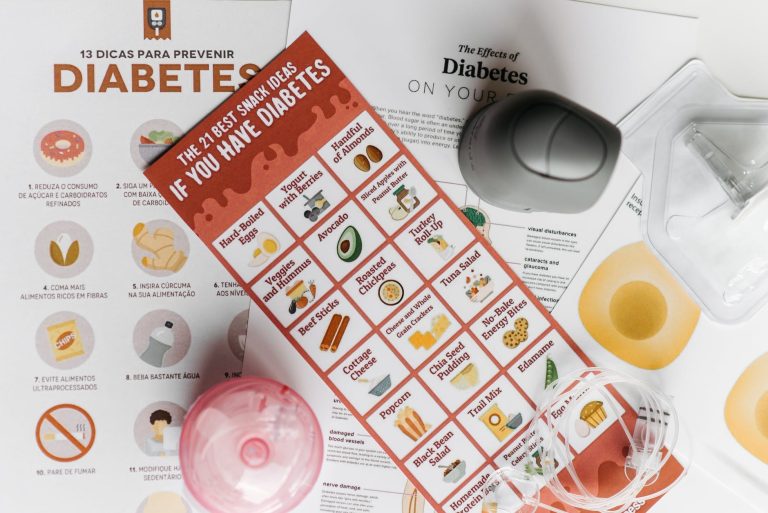Barkbox (BARK) is a brand that is synonymous with dogs and funtertainment gave the monthly subscription box of toys, treats, and chews. Nevertheless, Barkbox gets a reputation as a fad/niche business.
A company that started as a hobby/passion for dog owners is now a business with over $500 million in revenues and 2 million subscribers. I see Barkbox as a trojan horse business where you successfully have 1 product and then extend the line. Apple did this a few times, with computers, then MP3, then phones. Crox did it with their shoe and Deckers Outdoor with the UGG boot; both thrived. The common denominator was a disciplined management team, a great product, and a strong brand. Barkbox has the common denominator in spades.
Timeline of Barkbox
Three scrappy entrepreneurs started Barkbox. They would tinker their product until they would get it right, and many times they would fail, and that is fine, but one thing they noticed was that entertaining the audience and making attractive toys were key selling points. Sure, there are many treats out there in the industry, but the offer becomes irresistible when you mix toys and treats. Over time they noticed that they lost subscribers due to a few factors:
- How many toys are too many toys?
- The pet may be getting older and loses interest; it happens.
- The dog goes to doggy heaven In facing these realities, the company had some hard questions to answer. How many potential customers are there out there that would purchase this subscription? What other products can we create or sell that allow the customer to stay frequently with us?
Is Barbox special?
Well, if you own a dog, you probably have heard of them. Their social media footprint is close to 9 million followers across all platforms. Their angle is entertainment, mixed with practicality and affordability. The perfect recipe to cater to all generations of dog owners, from young to elderly. Their toys range from WWE-themed toys to Weed paraphernalia to mainstream-looking toys that attract the mass market shopper at Target, etc. Barkbox is unique because it attracts a demographic similar to Pinterest, as most of the customers are female, more than 75%. These are the soccer and pageant moms and millennials who choose a dog over having children or at least postponing having children. This is not just a USA trend, but a global one, accelerated due to COVID as people realized being lonely is not fun and a dog brings all the benefits of companionship and entertainment.
Customer opportunity
BARK caters to super fans, which is people who love and are borderline obsessed with their pets. Although 65 million households in the USA own dogs, I think the market opportunity for BARK’s current subscription box is in the 30% range or 13 million subscribers. They currently have 1.95 million and over ten years have had an additional 2 million already sign up and cancel, which leaves around 9 million left to go with the CURRENT subscription box offering; when you consider barkeats and barkbright and the other channels, they can keep growing the ecosystem. The loss of a subscriber is not necessarily bad because if the brand is strong enough, it will get the customer to come back to maybe buy one toy, treat, or home product they are interested in or sign up for BarkBright or BarkEats, so yes they may have lost the $240 annuity. Still, they may be able to get them to buy $50 to $100 a year in other products. That is less money going to Amazon or Chewy.
Customer Revenue Channels
Subscription Toys and Treats Super Chewer Bark Bright Bark Eats Combo of 2 of the above or more.
DTC store – Barkshop.com Retail – Target, Costco, etc.
What is the Barkbox moat?
If I had to sum it up, it would be its ability to listen to its audience and cater to attract products they would be interested in buying or looking forward to in their upcoming shipment. Zappos started selling shoes and became so good at listening to their customer they got acquired by Amazon. Service matters, and Barkbox has knocked it out of the park compared to peers.
What did Matt and I talk about? Lots.
Given my previous conversation with the Investor Relations department, Mike Mougias, I had already cleared up some of the housekeeping questions and wanted to take the time to ask Matt as many questions about the business, obstacles, etc.
Let me be upfront in saying I have been sending a few e-mails to the management team, and this meeting was supposed to be 30 minutes and ended up being 1 hour. I think we could have gone longer, but I would prefer them to keep growing the business, and I appreciate the time they gave me. I have also sent them e-mails regarding their interview on Cramer’s show, five pages of notes of their Investor Presentation that needs a lot of work; this may have been one of the reasons there was none after the quarterly earnings report.
My main concern or talking points revolves around the bear thesis, which is that the business model is a fad or niche and will not be sustainable and what is Barkbox’s plan to extend the membership from 16 months to 20, then 24, etc.
The response I got was that BarkEats would help extend the average price per subscriber and extend the duration. Although I know, that is an easy response we have heard in conference calls and investor meetings, I brought up that changing people’s habits to buy dog food would have to offer a significant value proposition, whether it is a better price or better quality food. People who routinely shop at Costco or Chewy will not cancel a monthly shipment of dog food so quickly. I agree that a segment of customers will prefer the convenience of small packages, changing food as the pet matures and set it and forget subscription vs. not having to haul a 30-pound bag of food in a store, etc. However, for the segment of dog owners that aren’t too super fanatical, saving money counts. I explained to them my personal experience of how I buy dog food via Amazon and that the pricing for BarkEats was more expensive per pound, and I failed to grasp the added value of their offering. They agreed they need to keep working on it, and this is why the BARKEATS has been tinkered with for over a year. The program was initially launched in April of 2020 and has not grown fast because the company has been tinkering with the offering, or maybe they are seeing that people are not as receptive to it? Sometimes you have to have the right balance of cynicism and optimism/vision. Could they grow this fast? Yes, but then what they don’t want is massive cancellations after that, so I am ok with being patient in getting it right, but if the product offering was terrific, we should be pretty close to an actual aggressive launch.
I then asked if there are any plans for a rewards program? No, plans. Now, I think that is a mistake because if you lose 2 million subscribers over ten years, there is a sense of no reward for the loyalty of any kind OR not enough products to warrant a program and pressed further. How do you expect people to stay longer if you are not rewarding them, get their friends to stay longer, or reward other purchasing behavior outside of the subscription? It ends up that the company had silo’d a lot of division within the company, and some were resistant to offering discounts on new products released, etc. So, if I got a subscription and say added a bed, they would not give me a discount, but they would if I would try BarkBright. They admitted that this was not the best approach and are working on combining or allowing additional benefits to subscribers via some discounting. Nevertheless, I was disappointed to know there was no plan for a rewards program, and after the e-mail was so bothered by it, I sent a detailed proposal of a plan I think would work for Bark.
Here is my e-mail below: After the call, I kept thinking of a few ideas on how to help bring back some old members and keep the current ones longer. I think the best solution is to have the ultimate rewards program for Pets ever made. Every airline and credit card has one, and why can’t dog parents?
So, I thought of BarkBucks. I know Apple does not have a rewards program or “discount” unless it’s a digital subscription. However, if you consider the cult following of Chik-fil-A, they have a rewards program and still have thousands of customers out the door every day, so I think a good program will go a long way and given your market is primarily women, you have to cater to their needs which is a mix of passion and competitiveness. Like you said, some would get jealous if their box didn’t have a toy and someone else did.
Below is more or less some brainstorming of how I think it could work at the surface but not sure about the financial impact if, for example, you go back to a subscriber that you lost two years ago that paid for two years and canceled, do you have them come back and give them a Tier below for one year? Perhaps this program works out better when there are more products released? These are questions you will have the answers to or need to find, but I hope this is helpful to get the ball rolling.
BarkBucks The best loyalty programs are ones that have the following features: · Competitive environment where higher status gets them more rewards and better deals or better toys?!?!?! Personalized with dog name on them?!?! · Exclusive discounts to products or storewide. · Exclusive events or products only sent to those Tiers (this encourages people to want to spend more within the ecosystem vs. chewy; this is why the key to keep launching home products, etc.) · Allow people to accumulate points to spend on products within the ecosystem, outside of the ecosystem, and share the points with friends and family. · Transfer, gift, the points to anyone for a fee. · Exchange the points for cash (gift card of AMEX, VISA, etc.) You can charge a hefty amount for this. Chik-fil-A has a good program that I think works perfectly for BarkBox, and I thought of more or less how it would work. Tier 1 10 Points for every dollar spent Tier 2 Earn 5,000 points in a year (paid $500) Earn 11 points per dollar spent Receive 5% discount at Barkshop.com Receive an additional 5% discount if you sign up for two or more subscriptions of 6 months or more. Tier 3 Earn 10,000 Points in a year (spent $1,000) Earn 12 points per dollar spent Receive 10% discount at Barkshop.com Receive an additional 10% discount if you sign up for two or more subscriptions of 6 months or more. Exclusive products or access to products before released to product (use the points to get them) Access to special events in specific cities.
Program info: Points expire within 24 months of the last end received. Points can be sent to friends and family as gifts with a 10% fee in matters. So, if they ship 500 points, they are charged 50 points (this helps get some of the “funds” back). Points can be redeemed for products at a rewards page which includes Bark products but also some products outside of it that are DOG specific (it will be the most UNIQUE rewards program in the world for Dogs and maybe even Pets) like working with local groomers small family-owned vets or perhaps a partnership with some companies.
End of e-mail.
Other topics in the discussion:
Margins. I asked how much their shipping costs were per box. They said that $6 per box was a high number, so I am now modeling $5 to $5.50 in my model, which means that the TRUE gross margin with shipping drops to around 45% to 50%, which is still significantly better than Chewy and Amazon. Keep in mind that they sell one of the highest margin products at any retail pet store; this is why they don’t want to open retail stores but keep building a brand akin to Nike.
Dog Insurance. The management team has spoken about this to investors and has said they do not want to do this. I think the mindset of BARK is the correct one in that it does not want to be the one to tell clients, “Hey, sorry, but we are not covering the vet bill for Sparky due to X, Y, Z factors.” It sounds like a poor customer experience, but in the insurance industry, you sometimes have to reject claims, especially if they suspect them to be fraudulent or abusive. However, there is a way that works for everyone involved in that the company works with an insurance company and collects a flat fee commission for every customer that purchases the policy with BARK. Trupanion paid in 2020 $200 a customer, and I don’t think it is unfeasibly for BARK to get 250,000 customers to choose the insurance option as part of their subscription. Getting, say, $150 in affiliate commission per customer on year one and, say, $50 every year thereafter brings in 100% gross profit into the business straight to the bottom line, tens of millions per year. Also, it gets the customer to go back to the website to renew, etc.
Home Products. The company has launched products at a rapid pace and today has more than 30 products in concept, which means a rollout of around ten that could be rolled out per year as these products need to be tested and sourced economically to be feasible to maintain the 60% or higher margin for the business. This division is probably the most underrated today as this division along with a rewards program, can help extend the life of subscriptions but also get them to stay within the BARK brand of products.
Bottom line
Overall, I walked away confident in the BARK story. Yes, there is a lot of work they have to do, and that is why you are getting a discount today. There is a lot of fear, panic, and uncertainty of the business, and I believe over a few quarters of results will show the power of the BARK brand and revenue channels, etc.
This article was written by u/ValueMaverick.




